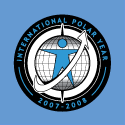


The name of the project was chosen as a shortening for: From Science to Public awareness (SciencePub).
The name wants to correspond the unique and important aim within this project, which is to establish a strong link between the scientific research and the public awareness/knowledge from the start of the project and all the way to the interpretation of the results.
The Arctic region is, by its nature, a unique area. It is mostly a vast, ice-covered ocean surrounded by treeless, frozen ground. It teems with life, including organisms living in the ice, fish and marine mammals, birds, land animals and human societies. The cultures in the region and the Arctic indigenous peoples have adapted to its cold and extreme conditions.From the perspective of the physical, chemical and biological balance in the world, the Arctic region is in a key position. The Arctic reacts sensitively particularly to changes in the climate, which reflect extensively back on the global state of the environment. From the perspective of research into climatic change, the Arctic region is considered an early warning system. The Arctic is the region around the Earth's North Pole, opposite the Antarctic region around the South Pole. In the northern hemisphere, the Arctic includes the Arctic Ocean (which overlies the North Pole) and parts of Canada, Greenland (a territory of Denmark), Russia, the United States (Alaska), Iceland, Norway, Sweden and Finland.